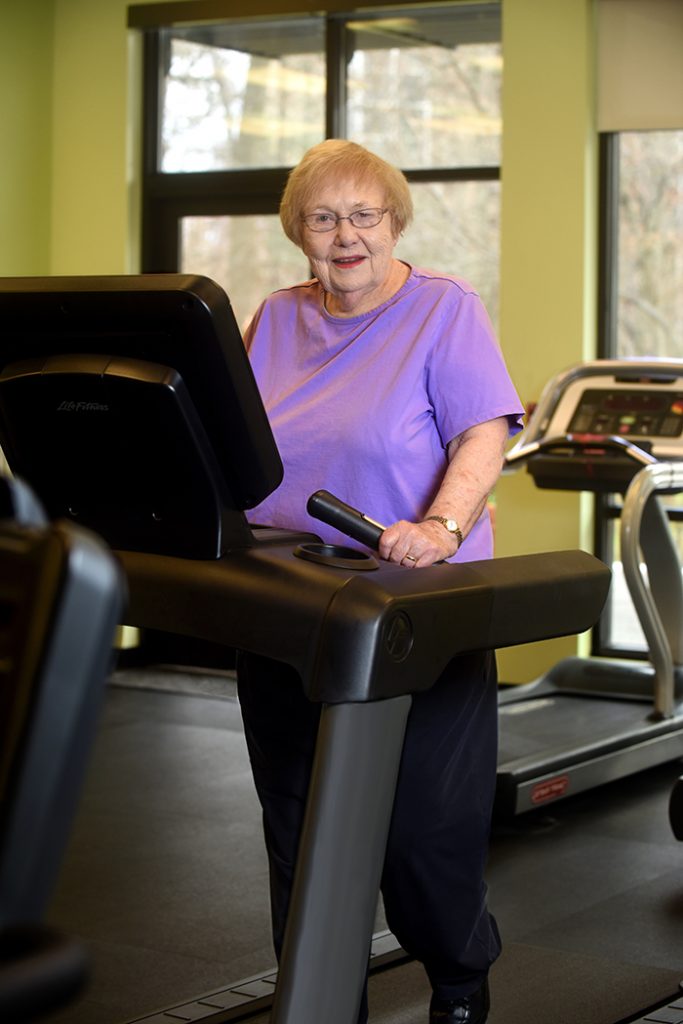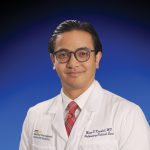Thomasina Borkman, age 81, was reluctant to accept her diagnosis of mild chronic obstructive pulmonary disease (COPD), despite her physician’s referral for treatment.
The retired sociology professor from Silver Spring, Md., had grown accustomed to her shortness of breath while climbing the stairs or walking to the car. “Refusing to acknowledge my COPD allowed me to avoid treating it,” she recalls.
Thomasina had been under the care of the co-directors of the Pulmonary Outpatient Clinic at MedStar Montgomery Medical Center, Manu Kaushal, MD and Vineesha Arelli, MD, since 2016. The clinicians were monitoring a dark spot on one of Thomasina’s lungs. In early 2017, the spot had grown larger and a biopsy led to an early-stage lung cancer diagnosis.
Thomasina underwent surgery to remove the lower left lobe of her lung. Today, she is cancer-free−but the experience made her take her COPD more seriously.
“After my lung cancer surgery, I realized I needed to accept the COPD diagnosis and exercise,” she says.
Most patients with COPD are undiagnosed and untreated, according to Dr. Kaushal.
“COPD is a progressive and chronic lung disease that worsens over the course of years. With impaired breathing and limited exercise capacity, patients modify their lifestyles, which leads to a decline in their quality of life. An early diagnosis and treatment can prevent this progressive decline and prevent hospitalizations,” he explains.
Thomasina began MedStar Montgomery Medical Center’s Pulmonary Outpatient Clinic’s pulmonary rehabilitation program. Designed to help patients regain their quality of life, the program requires a physician referral and involves 30 sessions over 10 to 12 weeks.
Patients attend three sessions each week and follow individualized exercise plans.
“Pulmonary rehabilitation is the only therapy shown to improve exercise capacity and improve quality of life for people with this debilitating lung condition,” says Dr. Kaushal. “Our program helps our patients get stronger.”
Some of the program’s patients are barely able to do their daily activities when they attend orientation, explains Courtney H. Cline, M.S., M.H.A, coordinator of the Cardiopulmonary Rehabilitation department.
Nonetheless, most patients who attend an initial orientation complete the program successfully. Staff teach patients pacing and breathing techniques that help combat lung-disease symptoms, such as shortness of breath. The multidisciplinary program also includes educational offerings, such as guest lectures from nutritionists, stress reduction counselors, and pharmacists.
Dr. Kaushal hosts an “Ask the Pulmonologist” question and answer session. Once they complete the program, patients are encouraged to continue exercising. They can design their own fitness plan or continue to use the department’s gym, where supervised fitness activities are available for a $50 monthly fee.
“After participating in our program, our patients find they feel less depressed, more capable and more confident. They leave our program with a better understanding of their lung disease and how to manage their symptoms,” says Cline.

For Thomasina, the program was life-changing. She left the program with a new appreciation for the importance of exercise, new breathing techniques to combat shortness of breath, and a better understanding of her medications and nutritional needs. “I am amazed at how much I learned,” she says.
Thomasina’s ongoing maintenance program includes independent exercise at her neighborhood fitness center and working with a personal trainer once a week. Soon, she’ll be starting a dance class.









